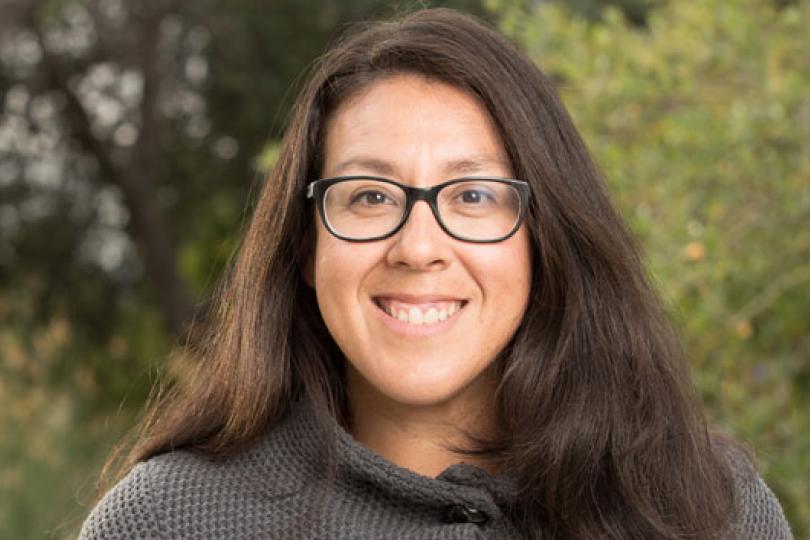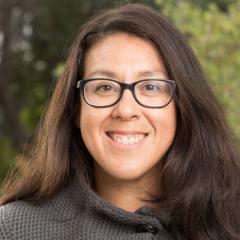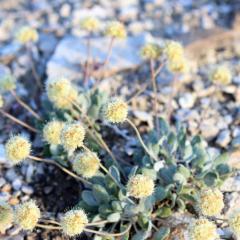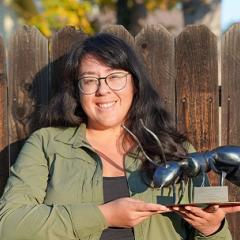Fraga featured in New York Times on finding and saving rare wildflowers
Editor’s note: The following content is excerpted from a full story in the New York Times, by Jill Cowan.
The white Toyota Tacoma bumped along the dirt path, up and down hills, brush scratching the sides of the truck with a high-pitched whine. Naomi Fraga, her hair in pigtail braids under a ball cap, drove like a slightly more cautious Indiana Jones guided by an ancient map.
She stopped the vehicle on a perch overlooking an expanse of boulders and Joshua trees in eastern Kern County, about 170 miles northeast of Los Angeles.
“This is right where they’re supposed to be,” she said.
Dr. Fraga, 43, was on a treasure hunt, but not for gold or jewels. She was scouring the desert for delicate blooms so tiny that they are called “belly flowers,” because botanists must get down on their stomachs to get a proper look at them.
This winter’s relentless rain produced a bounty of flowers across California this spring, delighting residents with vibrant color in places like the Antelope Valley California Poppy Reserve, where visitors have lined up to take selfies with the displays. After unusually wet spells like this, species emerge that haven’t been seen in years.
To Dr. Fraga, a botanist with the nonprofit California Botanic Garden in Claremont, this spring affords an extraordinary opportunity to document the existence of rare plant species so that they might be saved from the brink of extinction.
…
The botanists’ ultimate goal is to secure endangered or rare species designations for the most threatened plants. That can lay the foundation to legally force land managers to make accommodations for threatened species. (For instance, the Center for Biological Diversity has made wildflower protection a key piece of its lengthy fight against development of the Tejon Ranch, where almost 20,000 new homes have been proposed north of Los Angeles.)
In order to get endangered or rare species designations, Dr. Fraga and her colleagues must first prove that the plants still exist. Dr. Fraga may be the only person equipped to do that for the plants she studies.
…
“We each have our pet species,” Dr. Fraga said. “I just wish we could do more. We keep talking about the extinction crisis, but we only know if things are going extinct if you keep track of them.”
Dr. Fraga sees the broad acceptance of habitat destruction in California as a kind of slippery slope. Each flower represents millenniums of evolution. If we accept the extinction of one obscure monkeyflower, she worries, where might it end? And what consequences might there be for disrupting complex ecosystems?
Each spring, Dr. Fraga and her fellow conservationists, including amateur botany enthusiasts who use apps like iNaturalist, try to document as many rare plant populations as they can.
…
Dr. Fraga homed in on monkeyflowers after stumbling upon a science career she never thought she’d have.
Her father, a Mexican immigrant who worked as a truck driver, thought she should become a kindergarten teacher after she was the first in her family to attend college. But at age 20, a mentor — also a Mexican American woman — took her on her first hike, to hunt for a rare herb. Her feet ached from her ill-fitting boots, but she was hooked. Dr. Fraga later felt the thrill of discovery; she has found five new species of monkeyflower.



